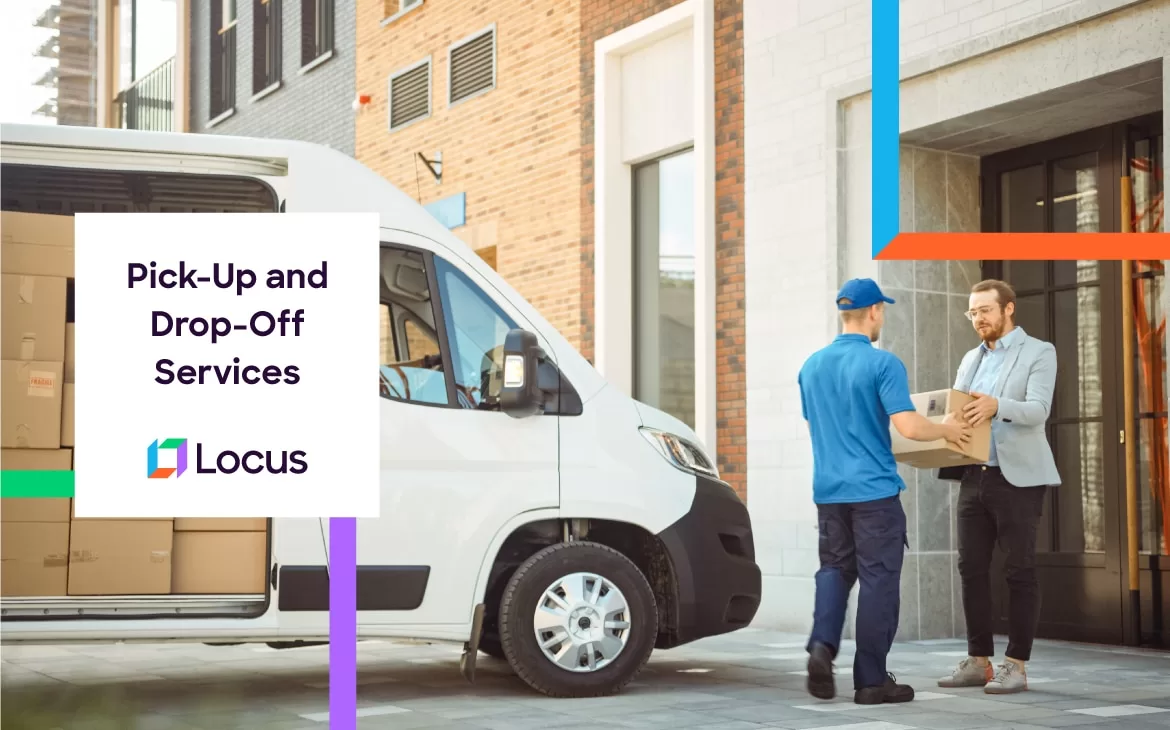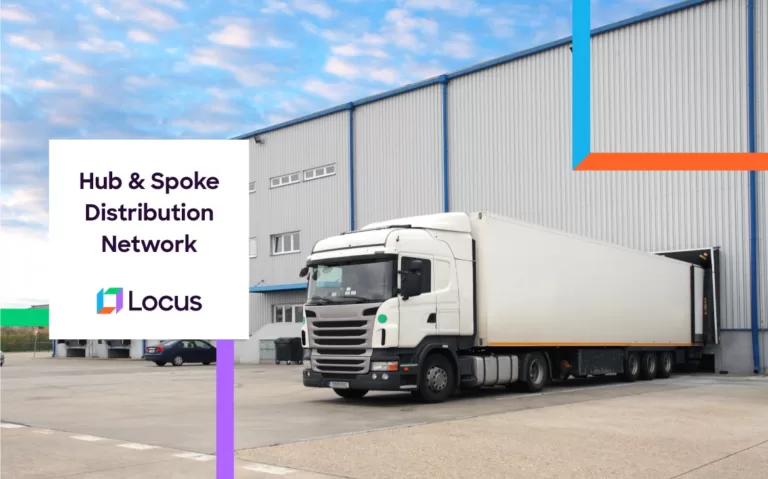E-Commerce, Last Mile Delivery Optimization, Retail & CPG
Pick-Up and Drop-Off Services: How PUDOs Can Redefine Delivery Efficiency and Convenience?
Apr 29, 2020
6 mins read
Last Updated: Jan 2021

Pick-Up and Drop-Off Services: The biggest last-mile challenges facing the logistics industry are: failed deliveries and missed deliveries.
Retail outlets have had a consistent collapse in in-store traffic since the outbreak of the COVID-19 pandemic. E-commerce has now become the preferred choice for any kind of purchase.
The rise in home deliveries has put increased pressure on stock and delivery capacity. Delivering 100 parcels to 100 homes is less efficient than delivering 100 parcels to three or four destinations.
If businesses have to deal with demand effectively, they have to reduce miles travelled, while ensuring that customer experience remains intact. Pick Up and Drop Off collection points cater to this very need. PUDOs frees up home delivery slots for those who genuinely need it.
PUDOs can enable under-pressure retailers to help customers access online shopping without long waiting periods. Today, many retail outlets are working on creating PUDOs locations like BOPIS collection points.
Customers hate to wait for their parcels, and on the other hand, it is equally painful when customers aren’t available even after all the relevant notifications. These failed and missed deliveries can impact your efficiency, and increase your reverse logistics costs.
PUDO (Pick-Up and Drop-Off Service) point facility is a smart step towards solving these last-mile challenges.

What is PUDO Location?
PUDO or Pick-up and Drop off point is a designated area where consumers receive or drop-off E-commerce packages at their convenience. Many countries like Indonesia, UK, Sweden, China, etc. have an advanced PUDO infrastructure.
In many other countries, the PUDO model has started to gain prominence now.
Types of PUDO Locations

- Locker bank: Infrastructure that helps you independently send or receive parcels.
- Convenience store PUDO: Convenience stores are local retail outlets that provide consumers with parcel dispatching services on behalf of their contract partners (parcel carriers).
- Parcel shop: Business whose primary purpose is to provide consumers with parcel services.
Improve delivery efficiency and convenience with Pick-Up and Drop-off services (PUDOs):

Failed Delivery attempts cost businesses and consumers alike. Consumers want a convenient option that lets them collect deliveries during flexible time periods. PUDOs (Pick-Up And Drop-Off service) help you manage delivery volumes efficiently by increasing the density of collection points. It ensures successful first-time deliveries, thereby eliminating service failures and reducing excessive costs.
Logistics companies value efficiency and consumers value convenience. Redirecting deliveries to PUDOs benefits both in different ways.
Zero wait time
48% of customer service professionals say wait times are longer, and 39% report a lack of resources to do their jobs.- Kustomer Inc, April Survey, 2020.
Consumers hate to wait for their deliveries,and every missed delivery causes consumers to lose trust. It forces the parcel carriers to incur costs for holding the parcel longer and rescheduling deliveries.
The wait times have only become longer since the start of the COVID-19 pandemic.
With the pick up and drop off service setup, consumers need not hang around at their office or home waiting for the delivery. They can rather focus on things that demand their attention. Locus can incorporate customer preferred time-slots into the PUDOs setup using time-slot management. This drives efficiency in the last-mile experience.
Increased flexibility and convenience of delivery options
40% of respondents are seeing disruptions to their supply chains from the virus and another 26% expect to see disruptions as the situation continues. – National Retail Federation Survey, 2020, April.
The COVID-19 pandemic has created a new normal. Companies have to adapt, meet, alter or exceed varying customer expectations.
It is necessary to update rigid supply chain strategies, enhance flexibility and meet consumer demands. If two words can define customer experience, they are— flexibility and convenience. Consumers today demand multiple fulfillment options, delivery efficiency and a safe shopping experience.
PUDOs help consumers collect packages at their convenience. Whether consumers need to send or pick up parcels, PUDOs reduce delivery failures.
Safe and secure location for products
Most Americans reported having packages pilfered once to twice at most in the last 12 months. While about 39% said they only had one package stolen, roughly 36% said that they had at least two packages taken. While it’s unclear, hopefully this means that victims increased security measures to prevent further package theft. We do see that 11% at most said they’ve been victimized three or more times. – Finder Survey, Porch Pirate Statistics, 2020.
Safe and secure storage of parcels determines the customer experience in the last-mile delivery. Leaving parcels outside the door when customers are unavailable can lead to damage or loss. It leads to repeated deliveries incurring additional costs or forces the customer to travel to an inconvenient location like a depot.
PUDOs ensure a safe and secure location to store parcels.
Reverse logistics made easy
At least 30% of all products ordered online are returned as compared to 8.89% in brick-and-mortar stores. 92% of consumers surveyed said that they will buy again if the product return process is easy, whereas 79% of consumers want free return shipping. Invescpro, E-commerce Product Return Statistics, 2020.
One of the biggest challenges in last-mile delivery is supporting the free shipping option. This free shipping option applies to reverse logistics also. Missed deliveries increase your reverse logistics costs. Managing reverse logistics for massive delivery volumes makes your last-mile logistics inefficient.
PUDOs provide an extra option to return items to sellers. It reduces the reverse logistics costs in the last-mile delivery, thereby supporting free return services to consumers. It also helps in executing comprehensive and cost-effective return logistics, thereby simplifying your reverse logistics operations.
Reduces last-mile delivery costs
The Bureau of Economic Analysis (BEA) reports that the last leg of overall transportation costs make up as much as 28% of logistics expenses.- Freightwaves, 2018.
Home deliveries during the pandemic have made last-mile deliveries quite costly. It requires each package to be delivered to a different location and demands a longer journey time. Also, it adds to fuel costs, driver costs, traffic congestion costs, thereby impacting cost-efficiency. Last-mile operators are also having a tough time in sustaining their First Attempt Delivery Rates (FADR).
Instead of delivering hundreds of parcels to individual doors, operators can instead deliver the parcels to a handful of PUDO locations. This reduces the time spent by drivers on the road. Pick-up and drop-off services with preferred time slots lead to fewer miles driven and higher capacity, thereby resulting in a higher delivery success rate.
Conclusion
Click-and-collect and returns have become commonplace. This has resulted in creation of new PUDO locations in supermarkets and small format convenience stores.
PUDOs infrastructure demands essential digital support like real-time tracking, user preferred time slots and shipment sorting solutions.
Locus’ TrackIQ compliments Pick-Up and Drop-off Services with real-time tracking. It helps you send real-time notifications and alerts to consumers.
Locus’ IntelliSort helps sort parcels based on delivery zones of PUDO locations. Also, it helps allocate riders based on their skill sets, delivery volume, and vehicle capacity.

References
Related Tags:

Featured
The Rise of Hub and Spoke Distribution Model in Modern Supply Chains
In an environment where every customer matters, know how a hub and spoke model can satisfy consumers with faster deliveries. What is Hub and Spoke Model in Supply Chain? As the name suggests, a hub and spoke model is a centralized warehousing and shipment system that resembles the structure of a bicycle wheel. The center […]
Read more
Supply Chain Optimization
Cost to Serve Analysis – The Holy Grail of Sustainability
We breathe in the age of disruption. Technology is transforming supply chains across industries and its digital twin is a lot more powerful, flexible and adaptable. The goal of any tech implementation / association in the supply chain is very simple – facilitate customer demand fulfilment while remaining highly profitable by eliminating wastages. However, there […]
Read moreMOST POPULAR
EDITOR’S PICKS
SUBSCRIBE TO OUR NEWSLETTER
Stay up to date with the latest marketing, sales, and service tips and news


Pick-Up and Drop-Off Services: How PUDOs Can Redefine Delivery Efficiency and Convenience?